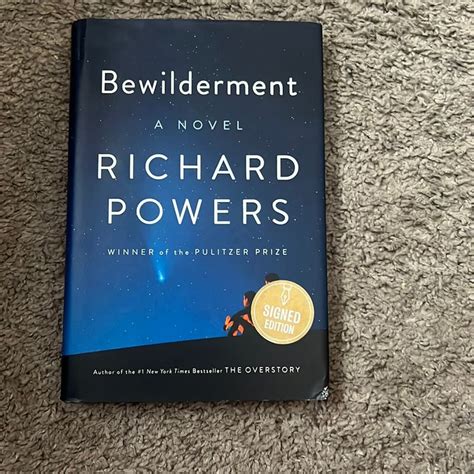Richard Powers is a Pulitzer Prize-winning novelist known for his unique blend of science, technology, philosophy, and literary fiction. His writing style is characterized by complex, lyrical prose and a deep exploration of the human condition. To understand how Richard Powers writes, let’s break down his approach into a step-by-step guide.
Step 1: Interdisciplinary Research Powers is known for his meticulous research, which often spans multiple disciplines. He delves into topics like botany, neuroscience, computer science, and environmentalism, weaving together seemingly disparate threads to create a rich tapestry of knowledge. This research informs his writing, providing a foundation for his characters, plot, and themes.
Step 2: Developing Complex Characters Powers’ characters are multifaceted and often flawed, reflecting the complexities of human nature. He crafts characters with unique perspectives, backgrounds, and motivations, which drives the plot and explores the human condition. His characters are frequently intellectuals, scientists, or artists, allowing him to delve into the inner workings of the human mind.
Step 3: Crafting Lyricism and Prose Powers’ prose is renowned for its beauty, precision, and musicality. He employs a range of literary devices, including metaphor, simile, and alliteration, to create vivid descriptions of the natural world, human emotions, and interior lives. His writing is often described as poetic, with a focus on the sonic qualities of language.
Step 4: Exploring the Intersection of Humanity and Technology Many of Powers’ novels examine the intersection of humanity and technology, raising questions about the impact of science and innovation on our lives. He explores the tensions between progress and tradition, highlighting the consequences of playing with the fundamental building blocks of life.
Step 5: Weaving Together Narrative Threads Powers frequently employs non-linear narrative structures, weaving together multiple storylines, timelines, and perspectives. This technique allows him to explore different facets of his characters and themes, creating a rich, multilayered narrative that rewards close reading and reflection.
Step 6: Integrating Philosophy and Ethics Powers’ writing often grapples with fundamental philosophical and ethical questions, encouraging readers to ponder the implications of scientific advancements, environmental degradation, and social injustice. His novels challenge readers to consider their own values and beliefs, fostering a deeper understanding of the human experience.
Step 7: Editing and Revision Powers is known for his rigorous editing and revision process, which can involve multiple drafts and significant rewrites. He has stated that he often discards large portions of his work, refining his ideas and prose until he achieves the desired level of clarity, precision, and literary excellence.
By following these steps, we can gain insight into Richard Powers’ writing process and the elements that contribute to his unique literary style. His commitment to interdisciplinary research, complex character development, lyrical prose, and philosophical exploration has earned him a reputation as one of the most innovative and thought-provoking writers of his generation.
One of the key takeaways from Powers' writing process is the importance of interdisciplinary research and exploration. By delving into multiple disciplines, writers can develop a richer understanding of the world and create more nuanced, complex characters and storylines.
When crafting characters, consider their unique perspectives, backgrounds, and motivations, and how these factors drive the plot and explore the human condition.
Implementing Powers' Writing Style: A Practical Guide

- Begin by researching topics outside your comfort zone, exploring the intersections between science, technology, philosophy, and literature.
- Develop complex, multifaceted characters with unique perspectives and motivations.
- Craft lyrical, precise prose that reflects the sonic qualities of language.
- Explore the tensions between humanity and technology, raising questions about the impact of science and innovation on our lives.
- Weave together multiple narrative threads, employing non-linear structures to create a rich, multilayered narrative.
What is the key to crafting complex, nuanced characters like those found in Powers' novels?
+Developing complex characters requires a deep understanding of human nature, as well as a willingness to explore the complexities and contradictions of individual perspectives. Consider your characters' unique backgrounds, motivations, and experiences, and how these factors drive their actions and decisions.
How can writers balance the need for precision and clarity with the desire to create lyrical, poetic prose?
+Achieving a balance between precision and poetry requires a careful attention to language, as well as a willingness to revise and refine your work. Consider the sonic qualities of your prose, using techniques like alliteration and assonance to create a musical quality that enhances the overall impact of your writing.
By embracing the complexities and challenges of Richard Powers’ writing style, writers can develop their own unique voice and approach, one that blends the best elements of science, technology, philosophy, and literature to create a rich, nuanced, and thought-provoking body of work.



